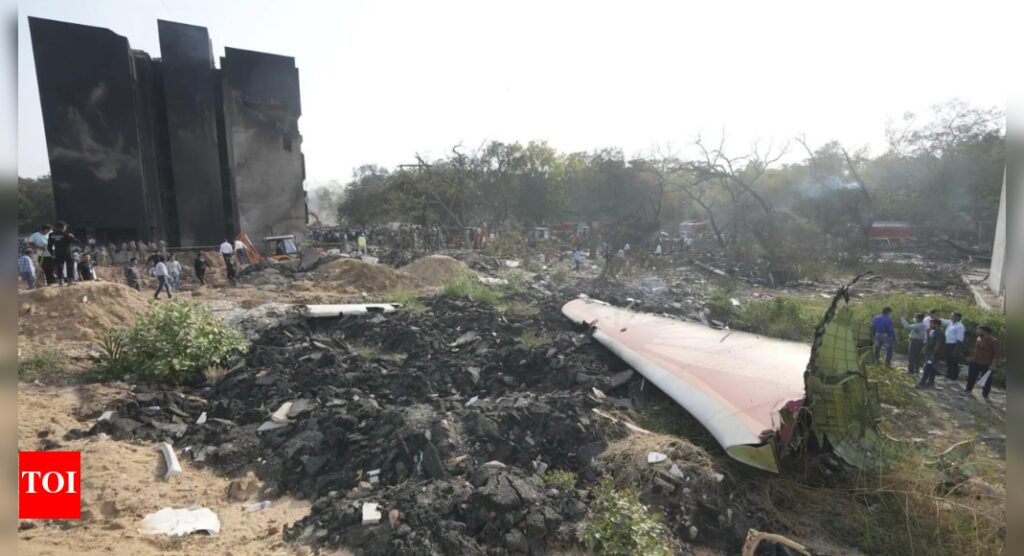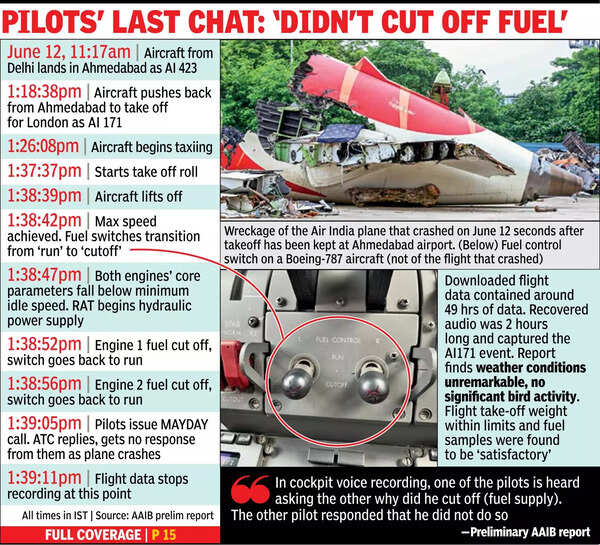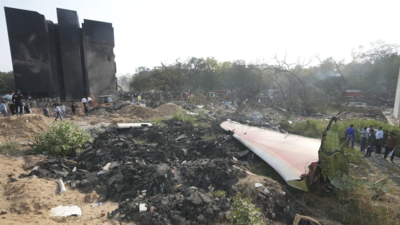
MUMBAI: Investigation into the Air India flight AI171 crash in Ahmedabad has revealed an unsettling detail. Three seconds after take-off, fuel supply to both engines of the Boeing 787 Dreamliner was cut off, either by a faulty fuel supply switch or manually by one of the two pilots. The report is ambiguous on what starved the engines. But it referred to a 2018 safety bulletin that instructed airlines to look out for a possible mechanical fault with the fuel control switches, which could cut off fuel supply to the engines.“In the cockpit voice recording, one of the pilots is heard asking the other why did he cut off (the fuel supply). The other pilot responded that he did not do so.” This is the most crucial information in the 15-page preliminary report released early Saturday by India’s Aircraft Accident Investigation Bureau (AAIB). The June 12 AI-171 crash killed 270 people, including 19 on the ground.

Aviation safety experts criticised the report for paraphrasing the pilots’ exchange.Accidental flip of fuel switch ruled out due to lockWhat stands out in the Aircraft Accident Investigation Bureau’s preliminary report into the AI 171 air crash is that it points to a single-point failure or tampering with a critical flight system, the fuel supply cutoff switch.The possibility of inadvertent movement of fuel control switch from “run”’ to “cut off” position was ruled out. “The fuel control switch has a locking mechanism for added safety. You lift it up with three fingers and roll it up and into the slot to run fuel supply to the engine and, similarly, you lift it up, roll it down and then push it back into the slot to cut off fuel supply,” said Captain Manoj Hathi, former director (operations), Air India. The report does refer to a 2018 serviceability bulletin concerning fuel control switch gates which flagged disengagement of the locking mechanism.The final report into the accident, to be released on or before June 12, 2026, will likely give answers and reveal the probable cause of the crash.Most crashes are caused by a combination of several factors & multiple failures, such as the AI Express Calicut or Mangalore crash in 2020 & 2010, respectively. While the commander of AI-171 had 15,000 hours of flying experience, including 8,600 hours on the B787, the co-pilot had 3,400 hours of experience.The senior commanders TOI spoke to also referred to another service bulletin issued jointly by the FAA and GE (engine manufacturer) in 2021. Service Bulletin FAA-2021-0273-0013 recommends the replacement of the “MN4 microprocessor on ECU” with respect to engine fuel and control. “This recommendation is to address a condition that may affect flight safety,” it states.It involves the engine control unit (ECU), the “brain” of modern jet engine. An ECU monitors crucial engine parameters and controls fuel flow. MN4 is an integrated microprocessor used inside ECU. It handles critical processing tasks such as interpreting sensor data, executing engine control algorithms, sending signals to actuators such as fuel metering valves, and managing fault detection and communication with cockpit systems.The report said CCTV footage obtained from the airport showed the ram air turbine (RAT) being deployed during initial climb immediately after lift-off. “No significant bird activity is observed in vicinity of the flight path. The aircraft started to lose altitude before crossing the airport perimeter wall,” the report said. “At this stage of the probe, no definitive cause has been determined, and no immediate safety recommendations have been issued to B787-8 or GEnx-1B engine operators,” it stated.








